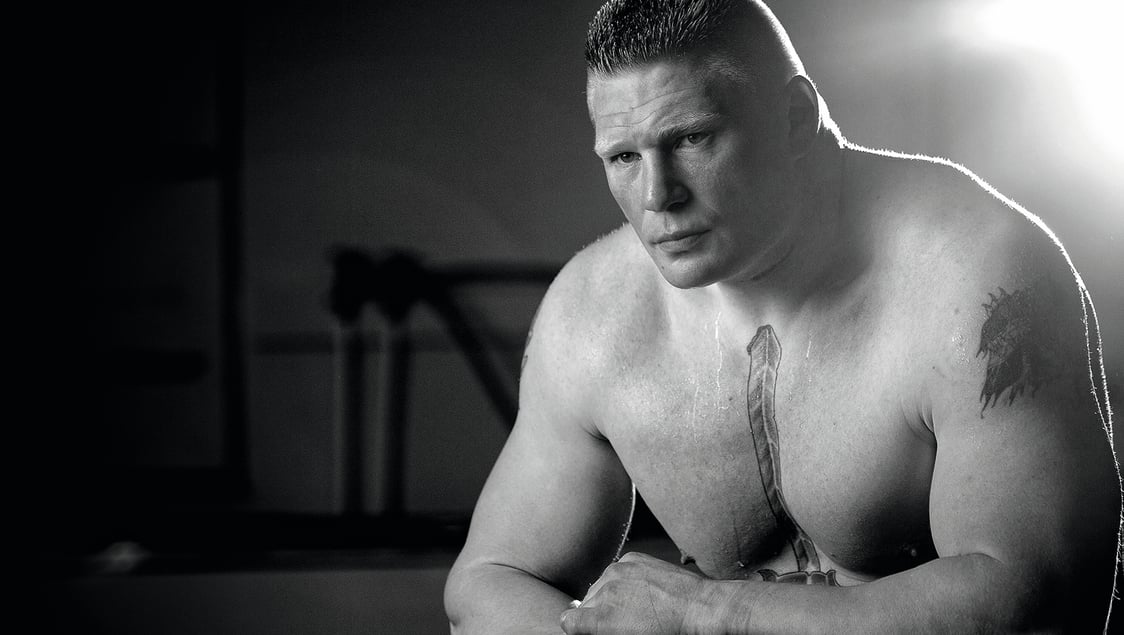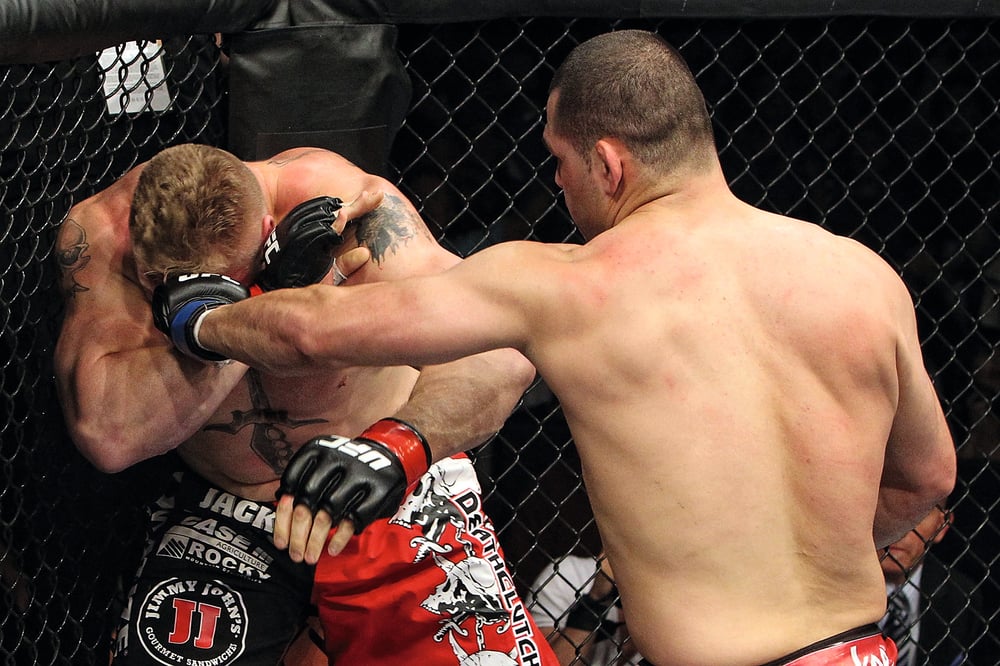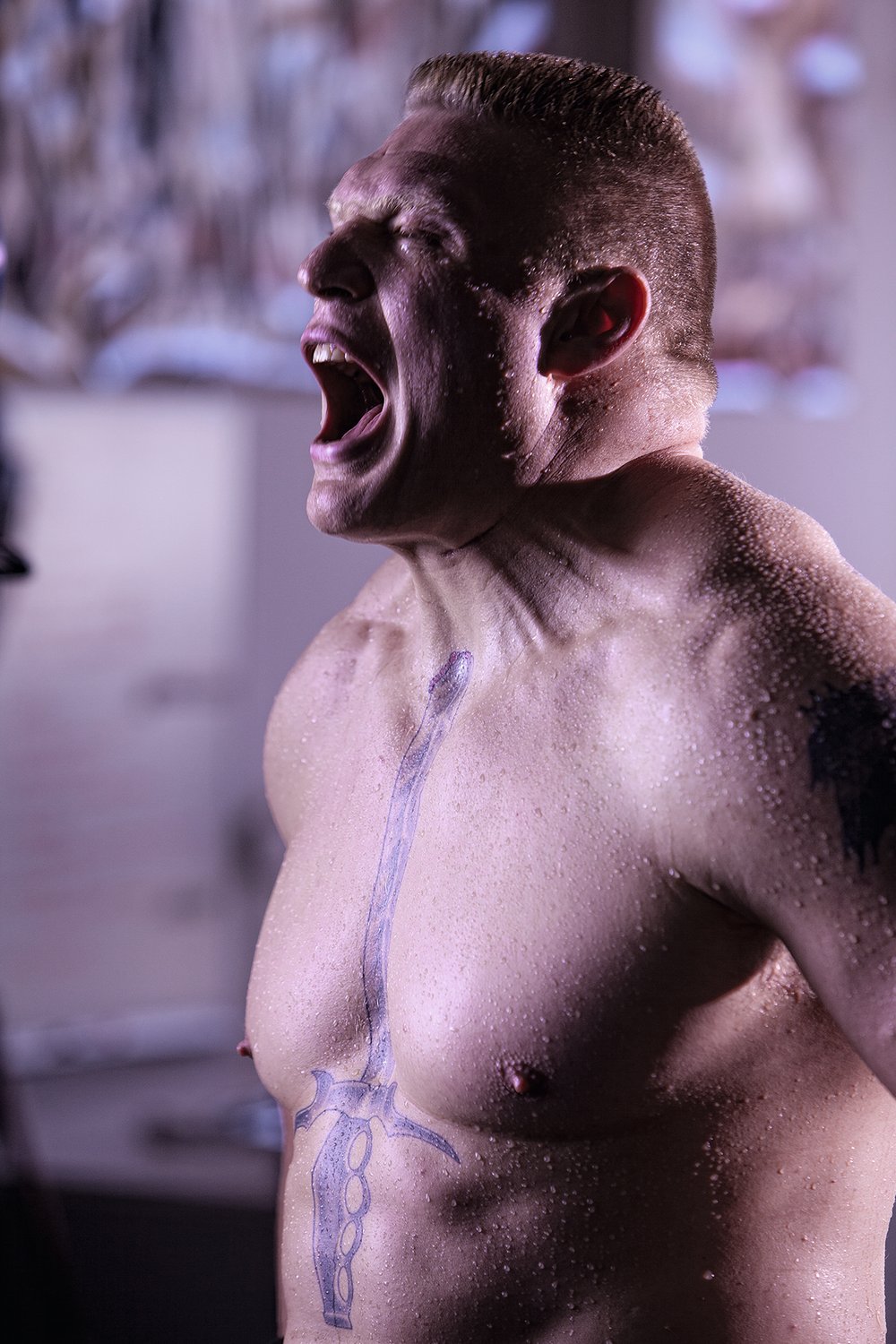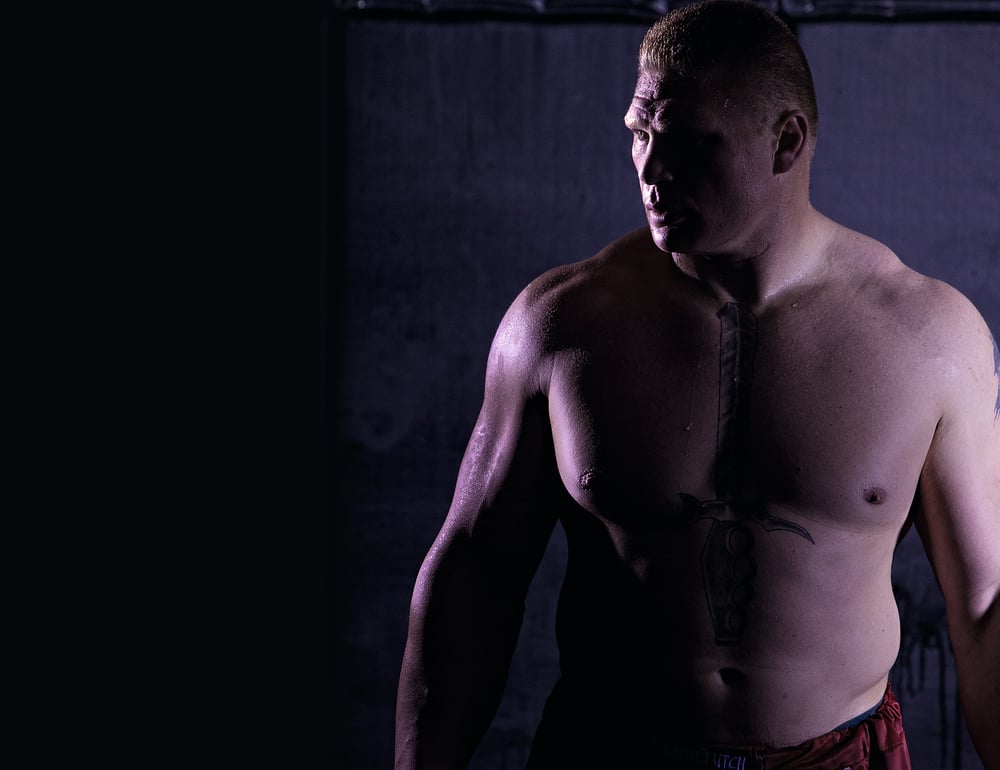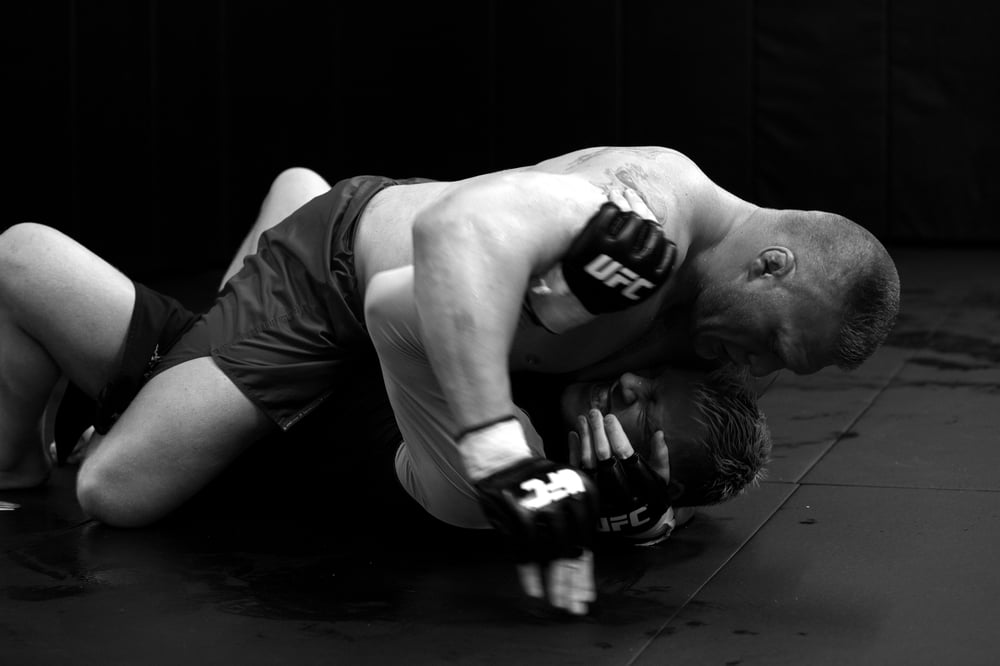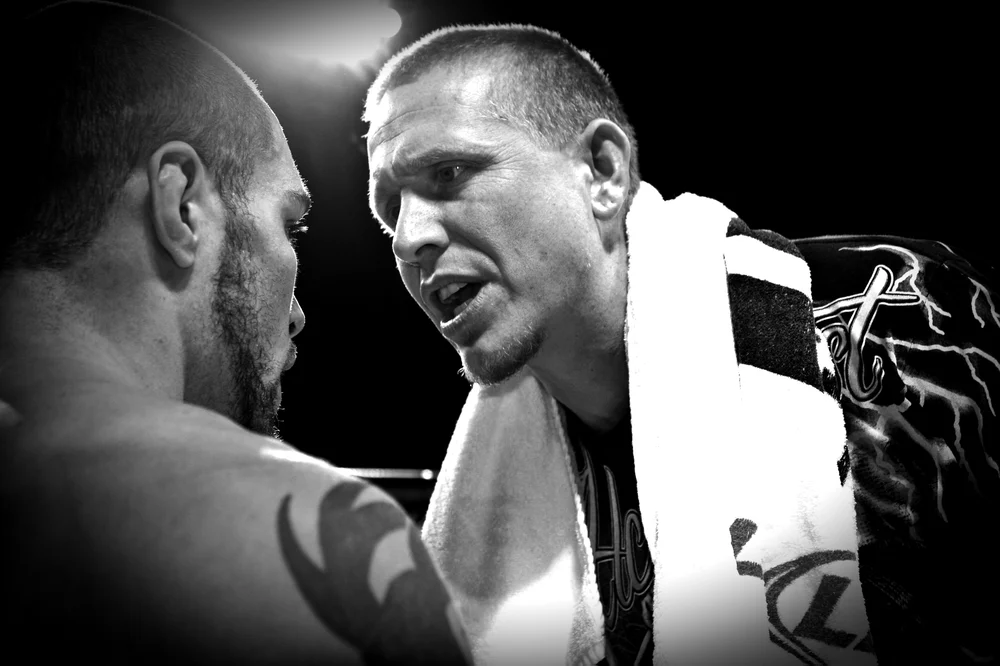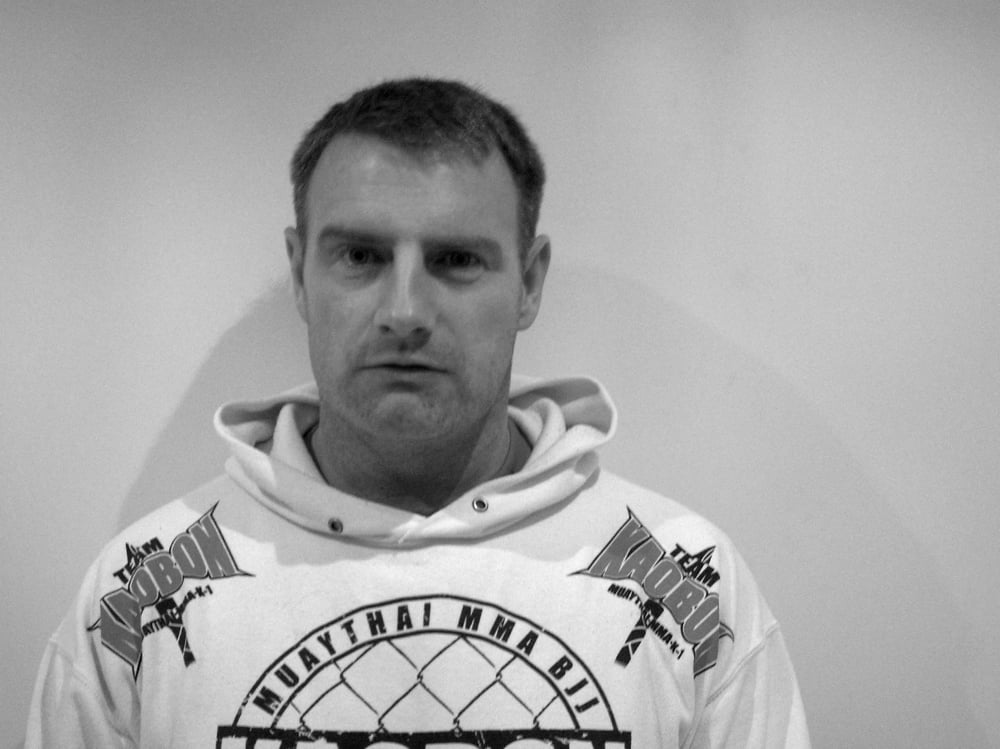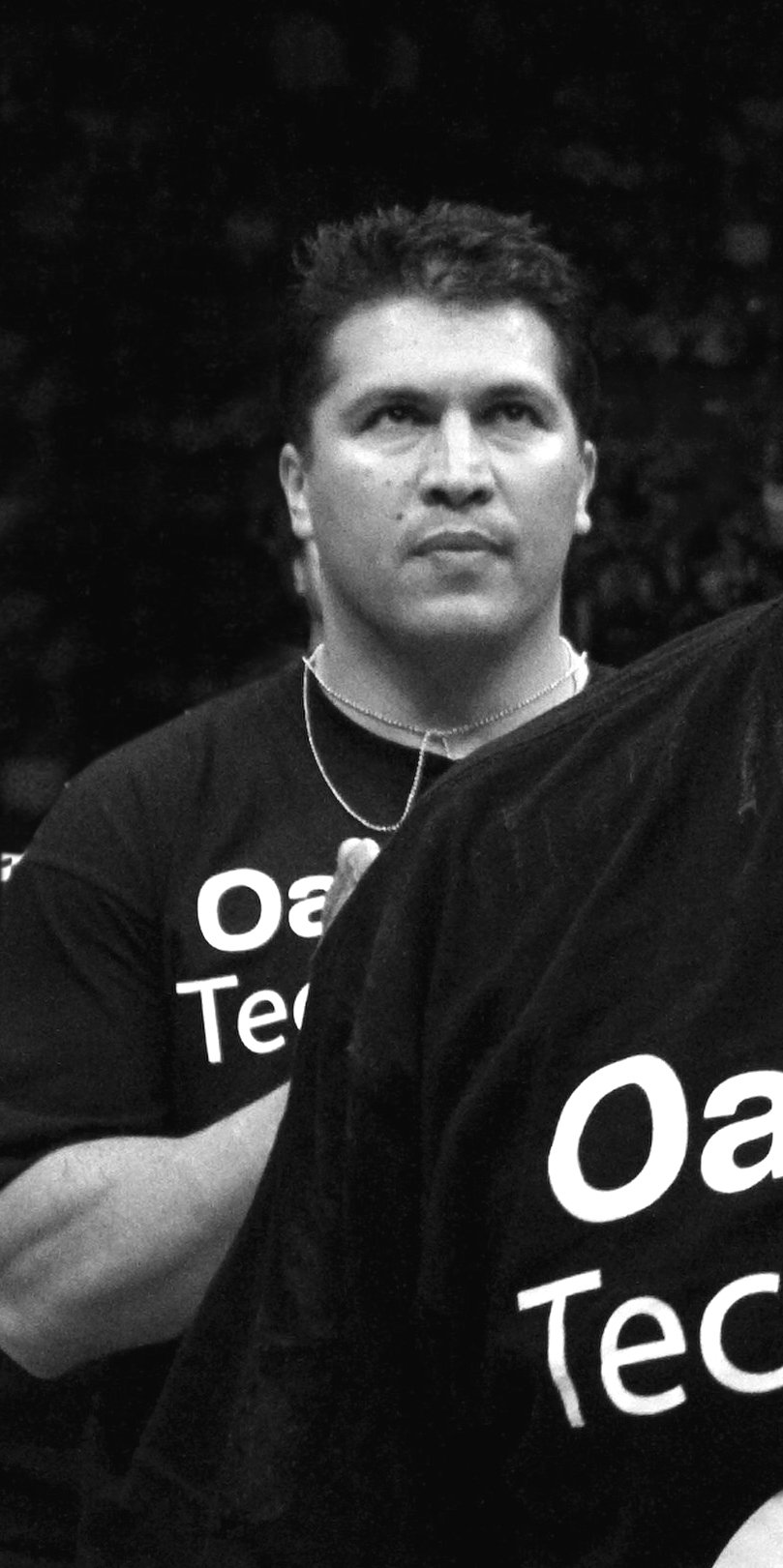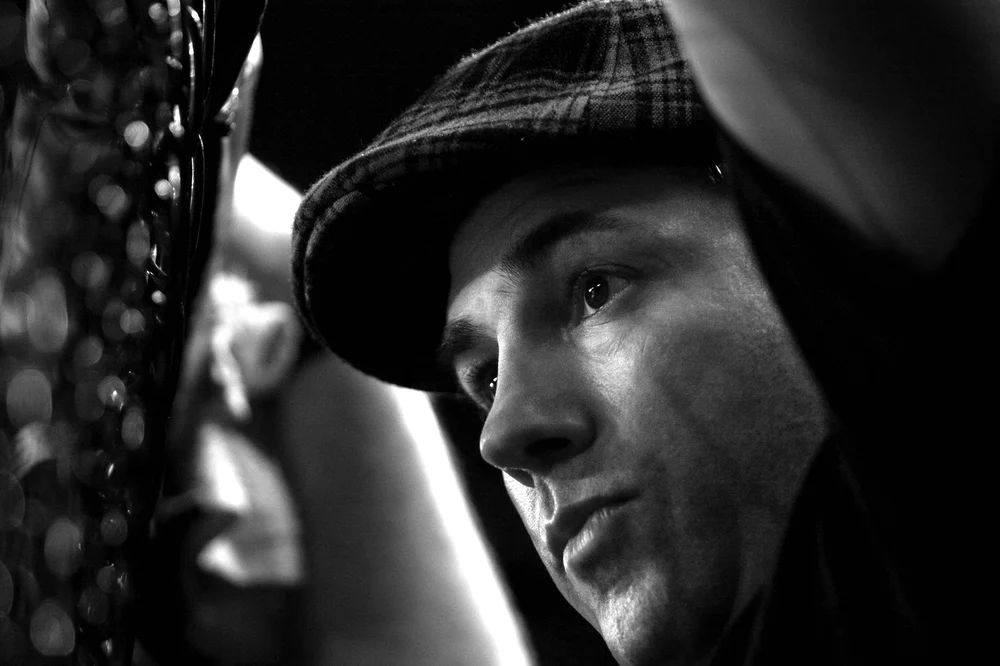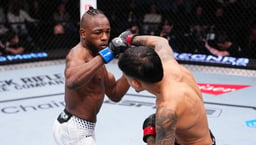
Issue 076
June 2011
WARNING: Nobody is more aware of the missing pieces in Brock Lesnar’s game than the man himself.
The most impressive thing about Brock Lesnar is his honesty; his propensity to learn and bounce back. In an exclusive interview with Fighters Only, there is a genuine sincerity about where the big man is right now in his mixed martial arts career; and indeed, a depth to the truth about what he needs to do to get to where he wants to be.
The giant wrestler covets the UFC heavyweight title, he has tasted its sweet pleasure and he is prepared to put himself through the mill to have that belt in his possession and buckled around his huge waist once more.
From wrestling to mixed martial arts is a bridge many have now crossed. Is it the greatest challenge of his life? “This is who I am. I am about challenging myself. I think I’ve been able to make the transition very well, and I think now it’s a matter of getting more comfortable with it.”
Amazingly, he has had greater athletic challenges than this. “You know, the hardest thing I have ever done athletically is gone to an NFL training camp. It was hard because I was like a fish out of water. It was tough to be there, very foreign to me, obviously, for many reasons. I wasn’t supposed to be there,” he explains. “In the fight game, I can bring my wrestling to the mix. It’s something I have done my whole life, so if there’s a position for me that I’m uncomfortable with, which is my stand-up game, I rely on my wrestling and I’m able to take the fight any direction I want to take it, which is good.”
In that analysis from Lesnar, there lies the rub. The argument he may have been pushed too quickly to the top of the MMA food chain and he is forced to rely too heavily on his exceptional wrestling base. “I was given fights by the [UFC] organization and I simply accepted them, you know. It just so happens that I haven’t had any tomato cans along the way, that’s for sure…” explains Lesnar, emitting a low chuckle at the memories of his opponents.

Lesnar’s striking game is the part of his arsenal he most needs to work on. He is open about it; there is no hiding it.
Does he now enjoy the striking element? “Absolutely. I know it’s something I need to get comfortable with and I just need to find my niche on my feet. Believe me, we are getting closer. I haven’t been able to perfect my stand-up game because the guys I’m forced to fight are guys who have had opportunities and fights [in their careers] to perfect their stand-up skills. I haven’t fought any slouches. These other guys have had more opportunity and more time in the Octagon to work on their stand-up game. And that’s the reality of it... You know what I’m saying?”
After speaking to a selection of the world’s leading striking coaches about Brock’s necessary striking development [later in this feature], I relayed to him their analysis that progression lies in drilling. “Yeah… yeah, it is about repetition,” he acknowledged, fully aware of the veracity of what our experts had said. “I understand that. It is one of the things I understand and we are working on it. It’s just a matter of time, that’s all I need. It is absolutely a challenge I’m enjoying too.”
That professional challenge, and fulfillment, is a massive part of Lesnar’s life, especially after the health scare which threatened to bring down his career in 2009. Suffering from diverticulitis, Brock faced a year out and had to rebuild his career. But he eventually bounced back, ending the unbeaten run of power-puncher Shane Carwin to retain the UFC heavyweight title. However, it was Brock’s striking inexperience that eventually caught up with him last October when the Octagon’s biggest prize was snatched away dramatically by new champion Cain Velasquez. The wounds remain sore for Brock yet he still reflects on it as a mere learning experience. Months lying in hospital waiting for answers clearly cut much deeper.
“I didn’t get knocked out. I haven’t been knocked out yet,” he atones. “I took a punch from Cain and he put me in a place where I didn’t know where I was and I tried to recover and he was able to keep that pressure on me. When the referee finished the fight I sat up and I knew where I was, but I just couldn’t defend myself. Your brain is telling your body to do things and it is not responding… but that will come. The illness was by far the worst thing. That’s my health. I knew what was going on in the Octagon, but I didn’t know what was going on inside me with the illness. It was life-threatening to me.”
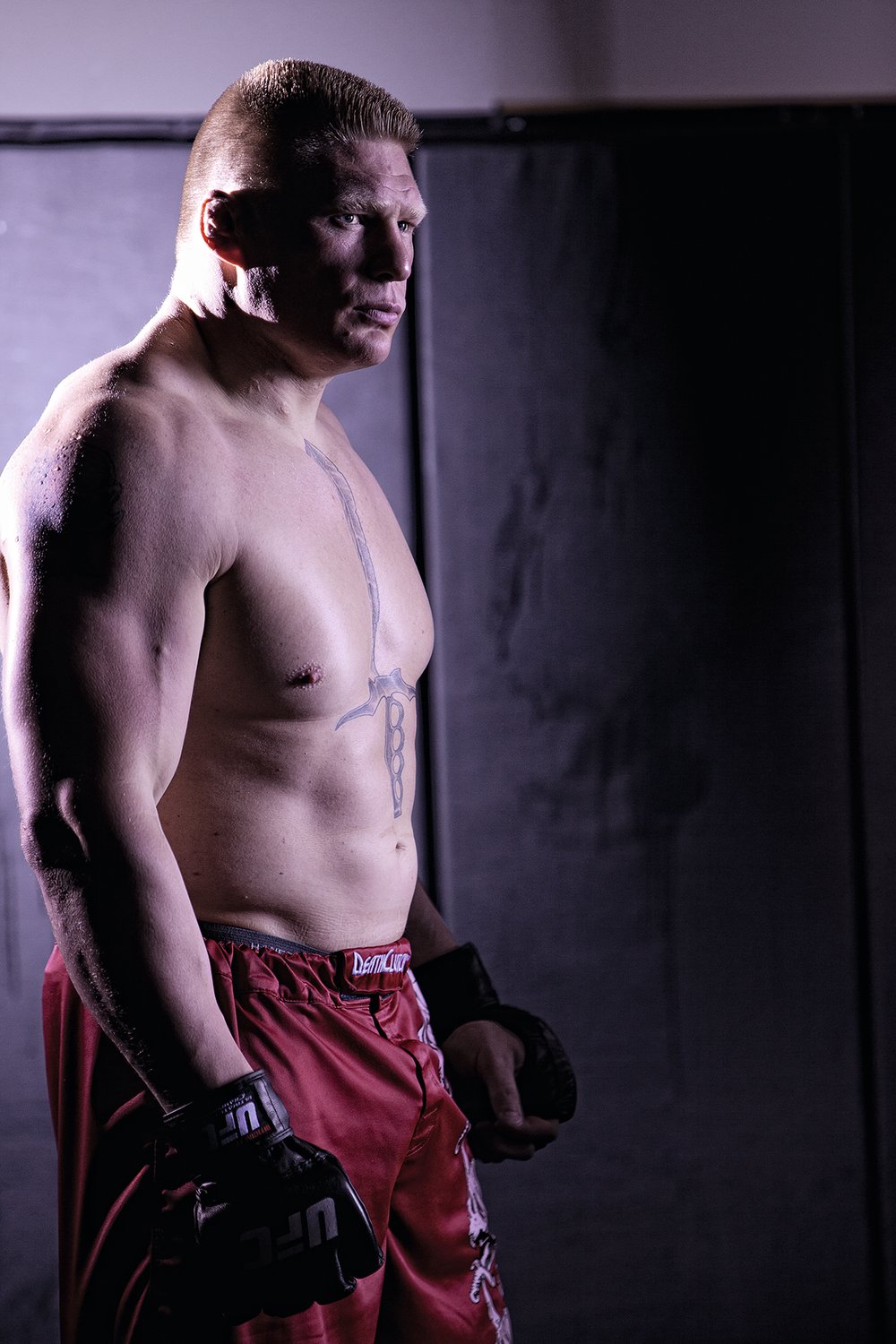
Despite incredible fame after such a high-profile career, Lesnar remains humble. Being a coach on The Ultimate Fighter series, by his account, was an eye-opener. “It was a good experience. I enjoyed it, I really did, and I learned a lot from it. It was good for me. There was something in becoming a teacher and a student at the same time. You start teaching things and you start remembering things along the way.” But, he refused to get a few psychological barbs in at rival coach, the Brazilian Junior dos Santos.
“My job was to coach the guys who want to become Ultimate Fighter winners so I didn’t do that. This show was all about business for me. By that, I mean I had a job to do and that was to help these guys to become the best fighters they can be, and in the same way I have a job to do come June 11th in Vancouver. And that is to beat Junior dos Santos. The Ultimate Fighter was pretty straightforward for me. Try and win as many fights with these guys and try to learn when I was down there and try to stay focused on what I need to accomplish… and that’s to get my title back.
“Look, sporting success is a combination of effort, talent and hard work. There’s got to be hard work and mental toughness, it’s not just one thing that gets you there, it’s an accumulation of many things. I’m cool, calm and collected right now.”
This was a communicative, relaxed Brock Lesnar. He revealed his greatest happiness is his family and the greatest misery he could ever perceive would be “not being with my family.” We had laughs. He would always choose a newspaper over an iPad; he would “love to be cloned” – to create the ‘Lesnar Vikings’ I ventured to suggest. He had a chuckle. I wondered if music played a role in his life. “I wish I could play guitar,” he said. “It would be country music.” He also revealed a deep sense in life of a greater force, of God.
“There is something bigger than us. I believe in that. Something bigger in our lives. There has to be.” Then what he would like written on his headstone? “That’s a good one. I’d like it to say, ‘Here Lies One Tough Son of a Bitch’.”
He adds: “I’m very happy with the way things are going [in his MMA career]. I’ve got a challenge in front of me – and that’s Junior dos Santos. I see the light at the end of the tunnel, I see the carrot dangling there in front of me... I’ve got to put the time in, in areas of my game, I know that and I’m hoping I am successful and I can speak to you a year from now as the UFC heavyweight champion. It’s been three years in the UFC and it’s been a pretty crazy ride so far…” It sure has.
Rebuilding Brock
Re-constructing the athletic monster that is Brock Edgar Lesnar is surely a mammoth task. The six-foot-three, 20st man-mountain with an 80-inch reach has already achieved major stripes in the UFC by winning the heavyweight crown outright in only his fourth contest. Yet to create a genuine legacy he must now conquer the flaws exposed against
Cain Velasquez; specifically his stand-up. His striking is insufficient and, arguably the most important critique of all, he goes into hyper-shock when punched in the face.
Behind the scenes ‘Team Lesnar’ remains tight-lipped over his progress, but they are undoubtedly rebuilding him ahead of his contest with the heavy-handed and formidable Brazilian striker Junior dos Santos in June.
But what about the experts? Fighters Only consulted those in the know – a group of the world’s leading striking coaches – to gauge their opinion on Brock’s evolution.
Duke Roufus, Javier Mendez, Colin Heron, Shawn Tompkins and Trevor Wittman, collectively a melting pot of minds unparalleled in their knowledge of MMA striking, all concur on one thing: Lesnar possesses that “winning gene.” There is open respect and a concurrence in opinion about the 33-year-old multi-millionaire from Minnesota. Brock must learn how to react under a barrage of punches and, while getting there may be taken with varying methods, he simply needs to take the hits.
Roufus, the six-foot-four former super-heavyweight kickboxer, regarded as one of the leading lights as a striking and Muay Thai trainer, says there is no question Lesnar possesses a winner’s mentality. “He is capable of anything he puts his mind to. If he has the capacity to put the time in and get better he definitely has the potential to be the most dangerous heavyweight out there,” says Roufus, who trains Pat Barry, Matt Mitrione, Anthony Pettis and formerly Stephan Bonnar, before adding with a chuckle: “Lesnar even has the physical skills that he might even be able to do the ‘Showtime kick’ [used by Anthony Pettis against Ben Henderson].”
It was against Velasquez that Brock met his nemesis: an equally determined heavyweight with top-level wrestling and exceptionally good, accurate striking. Conversely, Lesnar is still a throwback, a second-generation MMA fighter: namely a wrestler with the extra fighting armory bolted on. And it showed. Javier Mendez, from American Kickboxing Academy, coaches the new UFC heavyweight champion. “Brock did a lot of good things against Cain in that fight, and anyone who underestimates Brock in any way does so at their peril,” he said, indicating that he believes Lesnar is not too far away from success in the stand-up.
“Cain is comfortable striking within the pocket, at close quarters, much more like a Mexican boxer,” reasons Roufus. “Because he’s confident about his wrestling, too, he can get really aggressive with his hands and kicks at close quarters. He’s a different animal. He’s like a Julio Cesar Chavez or a Mike Tyson, with a wrestling base.”
Trevor Wittman, who trains heavyweights Shane Carwin and Brendan Schaub, believes Lesnar’s defense is the key to his future in MMA. “Brock broke down in the Cain fight. You could see against Cain he threw in the towel. If he fights Cain again and he hasn’t changed things it’s going to be the same again. Brock can take a punch, no question. But he did the same with Shane. He showed he can take a punch, but when he is hit he doesn’t fight smart in that moment and doesn’t make good decisions when he’s in that pressure situation.”
Shawn Tompkins, the renowned kickboxing coach based at the TapouT Training Center, Las Vegas, has worked with the likes of Wanderlei Silva and Vitor Belfort. “Against Velasquez, Lesnar faced a fast, athletic guy who hits really hard. He was getting hit in a different way to being hit by Carwin. Velasquez is one of the most complete fighters in the heavyweight division. If you watch him hit and move he is so dangerous. Anyone pointing the finger at Brock should be wary. He’s not fully there yet, but I don’t know how many people could take what he did, put their armor on and come back strong. He’s definitely got the competition in him. Anyone who has followed the sport knows when a high-level wrestler comes to the gym they have a work ethic that is second to none and, secondly, they are the most competitive athletes in the world. Brock comes from the top of that food chain.”
For Lesnar, striking clearly remains his Achilles heel. In a formidable athletic career, he had not taken punches as an athlete until he was 28. There were rumors that pre-Velasquez he didn’t like being struck in training camp. Arguably, there are physical limits on how good top wrestlers can be as technical strikers. But there must be a way of teaching Lesnar to adapt striking techniques to protect his chin.
“One thing I would say is it is clear he needs to work on real sparring, stand-up sparring, boxing and kickboxing from a technical perspective,” offers Mendez. “He might already have these things done, but he is not as comfortable in the stand-up as he has to be to compete at this level and to stand with the elite heavy-hitting big guys he is facing.”
Roufus takes another approach. “Defensively, I’d use the Dutch method, with a lot of partner skills, getting him to be hit often to almost de-sensitize him,” he explains. “Sparring back and forth, all behavioral drills. Offensively he could do with having a one-two punch because he already has the strength and agility. If he can improve his punching accuracy he will be just about unstoppable.”
Colin Heron, at Team Kaobon in the UK, has been a Muay Thai striking coach for almost two decades. “There is no doubt Brock is an amazing athlete, but as soon as he gets hit reasonably hard it shows that he has not done lots of high-level sparring. I would make him drill with a big guy. We do a lot of heavy sparring at Kaobon. It’s about learning to react under pressure we refer to it as ‘structural technique sparring.’ There is no substitute for it and you have to condition yourself to react in the right way. It’s not rocket science. It takes time, heavy sparring, and plenty of it.
“As for covering up, and using those huge forearms in defense, that would also come from the sparring and would change the way he reacts. If he did enough pressure drilling he would use movement, his arms, and would be able to ‘think’ his way out of those heavy moments in a fight. If he drills it enough his brain will adjust and he won’t cower away from being hit. There is an element of fear in getting hit, there is a shock factor, and after a while, after drilling it, your brain tells you that it is no big deal, this is what I do for a living. It has to be that natural.
“Attacking-wise, he should do things that suit his body type. He gives himself no time to rotate because he storms forwards. It is all upper-body punches because he’s on the move, like a Chute Boxe fighter. That’s where footwork could come in. I’d get him moving in, moving out. If you can’t do it properly, you can’t attack, nor can you defend. I would have his footwork sorted out, cut down the angles without exposing his chin.”
Wittman believes defense, not attack, is the key. He concurs with Heron. “I’d have him work a lot of defense. He’s very robotic and he pushes punches away. It looks like he hasn’t done a lot of sparring. He may have but he’s a big guy and he may be just taking guys down in training when he’s under pressure. I’d force him to be taking the hits but stay on his feet rather than going for the takedown. He needs more lateral movement and not to fall in with his punches. He falls in with his hips turned and if you do that in the cage, you leave yourself open to getting your head knocked off. That’s why Shane was looking to use the left uppercut and the left hook. If I was working with Brock, the best thing to do would be to put him in ‘worst case scenarios’ over and over again and through that he would learn to weather the storm.”
Tompkins believes Lesnar also needs confidence and has seen many wrestlers take time to make the transition. “One of the biggest things for wrestlers is getting involved in sparring because the contact in wrestling for so many years will have involved lifting and pulling. When the wrestler gets involved in boxing and kickboxing it’s a question of them getting comfortable with punches coming at them, adjusting to that, and then answering back. In Brock’s case, you can’t just put him in with sparring partners at a super-high level. It would be a question of building his confidence. It’s a very sensitive thing bringing a guy from a great wrestling background who is uncomfortable being hit. It takes time to adjust, but then you have to put them into the fire at some point.
“He was thrown to the top of the food chain so quickly he has had to master so many technical things so quickly and this sport is tough, and it comes no tougher than the UFC.”
So will Lesnar eventually get there? “Definitely,” says Roufus. “He’s already so dangerous.” Wittman says we will find out in the next year. “What he has been through is hard to overcome. We will now really find out what Brock Lesnar is all about.” To a man, every coach agreed on that. Beware the return of the rebuilt Brock.
The road to the UFC
Brock Lesnar’s former WWE career may have stripped him of the respect of die-hard MMA aficionados, but even in professional wrestling his achievements were outstanding. During the grassroots of his college wrestling career, Brock attained 106 wins and five losses, going on to become the 2000 NCAA heavyweight wrestling champion. Upon leaving the University of Minnesota, Lesnar went into Ohio Valley Wrestling, a feeder for the WWE. When he finally hit the pro wrestling company in 2002 (then the WWF), Lesnar rapidly rose through the ranks to sign a million-dollar-a-year contract. Lesnar was hugely popular. In spite of his enormous size, he could do the shooting star press, standing on the top rope of the ring, throwing his legs out in a backwards summersault and landing on his opponent with his stomach. He was also throwing 500lb men around like rag dolls.
Brock left the WWE at the age of 27, turning his focus onto pro football. Soon after recovering from a motorcycle accident, he tried out for the Minnesota Vikings, his local NFL team. Even in those circles, Lesnar’s athleticism and speed were a revelation. He had a 35-inch vertical leap and showed huge acceleration as a sprinter. Yet his career was short-lived. As Lesnar hadn’t played football since his college years, the head coach requested he play with the Vikings in the feeder league in Europe. The prospect of being away from his family was unappealing. It was then he decided to follow a path into MMA.
In 2007, Lesnar announced he was taking up mixed martial arts and had signed for now-defunct Japanese company K-1 Hero’s. They paid him a salary for a year to train in mixed martial arts. After winning his first bout, submitting the Korean Min Soo Kim, an Olympic judo silver medallist and K-1 kickboxer, due to strikes at 1:09 of the first round, Lesnar’s MMA career was up and running. He then cornered UFC president Dana White at a UFC event and persuaded the organization’s president to sign him. In October 2007, the UFC had a new star; a bankable beast that was ready to tear up the heavyweight division. It was the birth of the Brock era.
Brock vs. Junior: What the experts say
Trevor Wittman, Grudge Training Center:
“Junior dos Santos is a way easier fight for Brock than the Cain Velasquez fight was. Dos Santos stands on his toes and throws crisp shots. He does have a great left hook and he’s consistent with it. He also has a good right uppercut, which we have seen [against Verdum, Nelson]. This is a great fight. I don’t see Brock going out there and standing with Dos Santos much. He’ll try to get Dos Santos to the floor, and once Brock has you there, it’s hard to get up from that. You see what he did with Frank Mir [at UFC 100]. If Brock gets position, or particularly a power position, he’s only going to pound his opponent out. It depends on what Brock comes in. He threw a jumping knee at Cain, but I believe he was scared early in that fight. He went in there after a rough fight with Shane Carwin. If he gets a win against Dos Santos, I will tip my hat to him and have the utmost respect for him.”
Colin Heron, Team Kaobon:
“Against Junior Dos Santos it is 100% certain that Brock will try to take this fight to the ground – it makes sense for him. But we haven’t seen Dos Santos’s ground game in the UFC, even though he has a black belt in jiu-jitsu.”
Javier Mendez, American Kickboxing Academy:
“People are not giving Brock Lesnar the credit he deserves. People are expecting Junior dos Santos to go in there and knock Brock out, but what is he going to do if Cain Velasquez couldn’t stop Brock from taking him down?
“You are not going to stop Brock Lesnar from taking you down. Brock underestimated Cain Velasquez and, if he gets another chance, he won’t underestimate him again. He has a lot of catching up to do with Cain right now. You underestimate Brock at your peril. He will come back very strong in this fight against Junior Dos Santos.”
Jeff ‘Duke’ Roufus, Roufusport Martial Arts Academy:
“Junior dos Santos is a great fighter but not the same as Cain Velasquez. Cain is also a great wrestler whose skills on the ground evened out Brock. The key factor with dos Santos is what kind of takedown defense he can show against Brock. That will be the key in this fight and, of course, how good Brock’s defense is against Junior’s striking. Dos Santos is a fine striker but a different type of striker to Velasquez. He will strike from further away, because he’ll be paranoid about being taken down. If Junior reaches you, he can knock you out. It’s another fascinating fight for Brock.”
...
